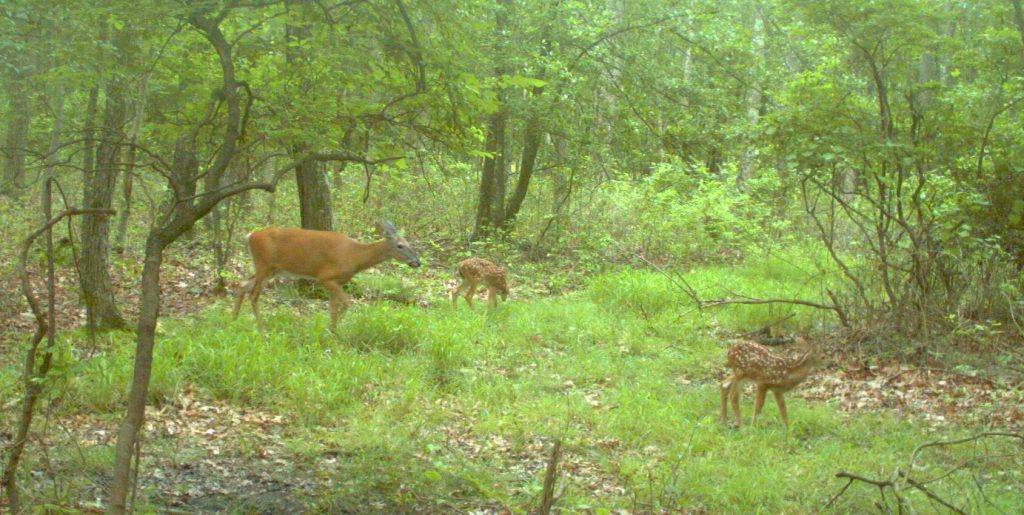Two people independently sent me the same research paper a couple of months ago. The title – Synergistic Population Density and Environmental Effects on Deer Body Condition. Sounds like a real nail biter, I know.
I’m always looking for something to share on the blog, so I thought I’d take a look. I read the abstract in March. What does that tell you? Last week I decided to give it another go. This time I skipped the abstract.
Biology is fascinating. If you are reading this, I’m sure you share that sentiment as well. But the synergism of population density and environmental factors aren’t really that romantic. Or maybe they are?
As managers, we look to our critters to tell us what is going on in the world in which they live. The most basic measure is body condition. For deer, body condition follows an annual cycle – lowest in the spring and early summer followed by high in summer and fall as they replenish lost reserves. The drivers of this cycle are population density and environmental conditions. In the words of a biologist, density dependent and density independent factors.
Density dependent factors are those that affect individuals as population density increases. We’ve talked about density-dependent factors like female dispersal before. More deer in the same areas with the same food resources affects individual energy intake. Competition increases and for individual deer it can result in poorer body condition, reduced pregnancies or smaller litters, increased risk of mortality, etc.
Density independent factors are those that limit a population regardless of size. Think snow, rain, fire, flood, earthquake, apocalypse. It doesn’t matter if there are 100 or 1,000 critters, all of them feel the effect of Mother Nature’s wrath. Density independent factors have the same effect on a population as density dependent factors – poorer body condition, reduced pregnancy, increased mortality.
The problem we face as biologists and managers is differentiating between the two. We can change population density, but we can’t change the “weather.”
Enter Synergistic Population Density and Environmental Effects on Deer Body Condition. This study took place on Anticosti Island, an island located in Quebec in the Gulf of St. Lawrence and infamous for its exceptionally high deer population. Deer were introduced in 1896 and never looked back. In some areas, density estimates are over 100 deer/square mile!
Researchers looked at long term data to investigate this relationship between density dependent (high population densities) and independent (snow depth, winter temperature, spring green-up) factors on body condition.
Did I mention how difficult it is to detect change? Deer are incredibly plastic. They can adapt and adjust to just about any condition. There is a reason they are the most widely distributed cervid in North America. They are the embodiment of the Marine Corps mission: improvise, adapt, overcome.
Using body mass as a proxy for body condition over a 10-year period, researchers compared over 3,000 females from 5 different study zones with varying population densities. They also measured protein and fat reserves as a window into energy allocation. Protein reserves are used for biomechanical functions like tissue repair and lactation while fat reserves are used during periods of environmental or physiological stress.
What makes this paper so interesting is they were able to tease out the effects of density and environmental factors on female body condition separately and…wait for it…synergistically.
- At high population densities, females had lower fat and protein reserves compared to those in lower density populations illustrating density dependence.
- In lower density populations, body condition was negatively influenced by heavy winter precipitation. Deer were unable to recover in summer from a previous bad winter. Illustrating density independence.
Ok, nothing too surprising there. You’re thinking no wonder it took me 3 months to read this paper. But here’s where it gets interesting.
- In high density populations, density dependent factors negate the effects of density independent factors.
If you are confused, so was I. And this is the reason it took me 3 months to read this paper. I could not understand what seemed like contradictory statements in the abstract.
What they found on Anticosti Island is deer in high density areas were in such poor body condition that fat reserves did not vary with winter conditions. Fat reserves in high-density populations were 23% lower than deer from low density areas. If the bank is empty, it doesn’t matter how much you write the check for. It could be a $10 winter or a $1,000,000 winter, that density independent factor made no difference to them.
But here’s where it gets even more confusing. Early spring green up is NOT helpful to deer. It’s a matter of quality vs quantity. Early spring green up allows slow plant development. It increases biomass at the cost of plant quality. Delayed spring green up is associated with rapid plant growth and high forage quality. Early spring green is akin to a celery buffet. You can’t get fat on unlimited celery sticks. Early spring green up results in reduced body mass for both low and high deer density areas. However, the effect was stronger in areas with high deer density. In this case, deer under density dependent stress DID response to density independent factors.
So which is more important or influential – density dependent or density independent factors? The answer of course is it depends. Sometimes they influence populations separately. Other times, they work together. Teasing apart which will be the winner in a given scenario is…wait for it…complicated.
Is it better to manage based on density dependent factors because those are the ones we have some control over? What about that $1,000,000 winter? That’s why understanding forests, deer, and the ways they interact are so important for making smart management decisions.
-Jeannine Fleegle
Wildlife Biologist
PGC Deer and Elk
